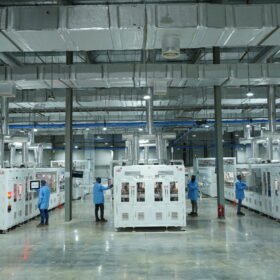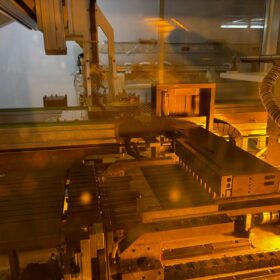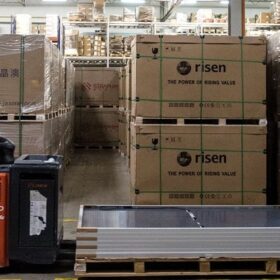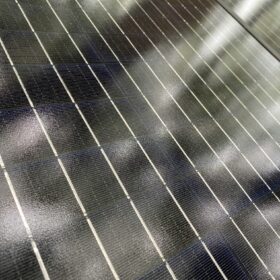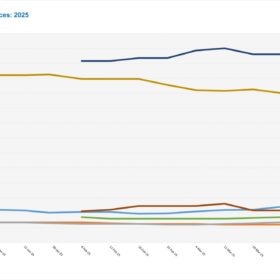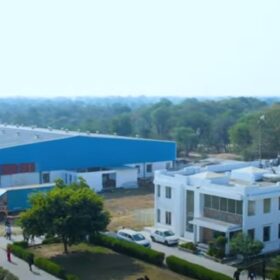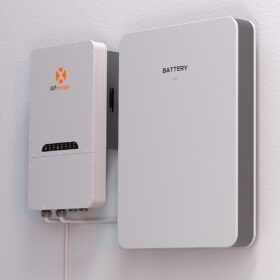India reaches 74 GW of solar module capacity
India’s solar module manufacturing capacity nearly doubled from 38 GW in March 2024 to 74 GW in March 2025. PV cell manufacturing capacity tripled from 9 GW to 25 GW.
AXITEC Energy India secures ALMM approval for 18 MW/year of solar module capacity
AXITEC Energy India stated five models of its mono c-Si PERC solar modules are now included in the Approved List of Models and Manufacturers (ALMM) by the Ministry of New and Renewable Energy (MNRE).
Long-term issues found in warehoused solar panels
Clean Energy Associates (CEA) is receiving more calls from solar developers concerned about warehouse panel damage. CEA senior engineering manager Claire Kearns-McCoy explains how improper handling, stacking, and storage conditions can lead to long-term issues.
Solar module, cell, wafer prices to rise in Q2 2025, says TrendForce
TrendForce says solar module, cell, and wafer prices will rise in the second quarter as China accelerates installations ahead of looming regulatory changes. It notes that prices are expected to decline in the third quarter as demand eases.
China solar module price rises for fifth straight week
In a new weekly update for pv magazine, OPIS, a Dow Jones company, provides a quick look at the main price trends in the global PV industry.
RMC Switchgears sets up solar subsidiary
RMC Solar One will be engaged in the business of generation and distribution of power generated by solar and other resources.
The current state of U.S. polysilicon production
Despite rising tariffs on imports and a looming U.S. Department of Commerce investigation, American solar-grade polysilicon production is expected to keep pace with the growth of the domestic PV supply chain.
Waaree Energies’ 5.4 GW solar cell manufacturing facility set for inauguration
Waaree Energies will inaugurate its 5.4 GW state-of-the-art solar cell manufacturing plant at Chikhli, Navsari, Gujarat, on March 29.
Technical guidebook for building-integrated photovoltaics
As the global transition toward sustainable energy intensifies, building-integrated photovoltaics (BIPV) has emerged as a critical innovation in merging renewable energy with architectural design. The recently published guidebook “Building-Integrated Photovoltaics: A Technical Guidebook,” edited by IEA PVPS Task 15 experts Nuria Martín Chivelet, Costa Kapsis, and Francesco Frontini, offers a comprehensive resource for architects, engineers, and urban planners looking to integrate BIPV into the built environment. This article explores the book’s key insights, including applications, challenges, and future pathways.
Home batteries vs. power generators
Assessing the difference in cost, functionality and operations of fueled generators versus home batteries.
